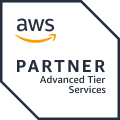We are in a data-driven era, and strategically managing data is a necessity in company operations. Leveraging advanced analytics resolves the problem of machine learning and artificial intelligence integration. Microsoft Azure Databricks stands out as one of the most useful platforms available today. It offers great functionality for data engineering, data science, and machine learning. However, pricing remains an issue for starters.
This guide covers everything you need to know about pricing, including functionality, how it works, and cost-saving suggestions. This article is intended for both new users to the platform and those seeking to enhance their platform utilization.
What is Microsoft Azure Databricks?

Microsoft Azure Databricks is recognized as a sophisticated cloud-based analytics platform, built upon the Apache Spark open-source framework. Unlike legacy data processing systems, Microsoft Azure Databricks is capable of swiftly executing large-scale data processing tasks, thus Microsoft Azure Databricks serves as a game changer for proactive corporations.
Key Features of Azure Databricks
Collaborative Workspaces - Allows data engineers, analysts, and scientists to work together seamlessly.
Integration with Azure Ecosystem - Uses other Azure services like Data Lake Storage, Machine Learning, and Azure Synapse Analytics effortlessly.
Machine Learning - Provides ready-to-use libraries in order to ease workflows associated with AI.
Scalability - Resources are automated to scale up or down based on consumption.
How Does Azure Databricks Work?

(Image source: Azure Databricks)
Azure Databricks seamlessly integrates with existing Microsoft cloud services and provides a rich set of built-in and AI powered analytics services. For example, teams can multi-function in terms of operating or processing massive datasets because everything is in one place. Here's a breakdown of how it works:
Clusters: Azure Databricks processes data by using sets of virtual machines as its computation engines. These clusters process user data in parallel, which enables them to deal with heavy workloads effectively and fast.
Notebooks: These serve as interactive user interfaces where users can interactively code and run segments of code. These notebooks are tailored for team-based work in such disciplines as data science or machine learning because ,unlike traditional notebooks, they support multiple programming languages like Python, Scala, and even SQL.
Jobs: These are automated tasks aimed at accomplishing a certain goal. Such automation is particularly beneficial for tasks that require frequent execution ,such as ingestion of data, ETL processes (Extract, Transform, Load), or even model training. With these automations, the user is able to engage in higher level tasks that add more value to the organization.
Compute and Storage
Compute Resources: These are powered by Azure’s virtual machines, and thus, the platform incurs an extra fee for workloads. The total cost incurred will also be calculated in relation to the selected VMs type and size.
Storage: Data is stored separately in Azure services like Blob Storage or Data Lake. These storage options provide security, scalability, and are independently charged from compute resources, guaranteeing data availability regardless of workload size.
Deep Dive into Azure Databricks Pricing Structure
Azure Databricks has adopted a pay-as-you-go spending model, which charges users for resources consumed. Below are the key components of its pricing structure:
Databricks Units (DBUs): Core billing unit representing processing power. DBUs are charged as the compute is used, on a per-second basis.
VM Costs: Charges for a specific Databricks cluster's virtual machine type.
Storage: Costs for cloud storage services such as Azure Data Lake.
Networking: Extra costs associated with networking infrastructure, maintenance, and data transfers.
Azure Databricks Pricing Tiers
Azure Databricks offers two main pricing tiers, with additional features like Enterprise available in select regions or through special agreements:
Standard: Basic analytics, job monitoring and scheduling, notebooks, autopilot clusters, integration into other tools of the ecosystem, etc, are offered. Small businesses and users with simple workflows at a value-oriented price would find this tier useful. Users should note that this may be the last region where this tier is available, as premium becomes the default.
Premium: Standard services are available with the addition of RBAC, audit logs, credential passthrough, Delta Live Tables, advanced security, and compliance customization. Designed for medium to large companies for use by their regulated business units, within cross-functional teams.
Enterprise: (Available in select regions or via negotiation) Offers sophisticated compliance, data governance, and enhanced support. Tailored for larger corporations and deeply regulated sectors.
DBUs Explained with Costs
DBU pricing varies by workload type, tier, and region. Below are the example prices for the US East region (actual prices may differ):
Workload Type | Tier | DBU Price (per hour) |
Jobs Compute | Standard | $0.15 |
All-Purpose Compute | Standard | $0.40 |
All-Purpose Compute | Premium | $0.55 |
SQL Compute | Premium | $0.55 |
Serverless SQL Compute | Premium | $0.70 |
DBU Consumption:

Consumption of DBUs increases with the type of virtual machine and its load. For example, a D4s v3 VM might spend 1 DBU per hour for Jobs Compute. As with more complex tasks, larger VMs incur higher costs in DBUs.
Example Pricing Calculation
Cost Breakdown for Jobs Compute Workload (Standard VM D4s v3, US East Region)
VM cost per hour: $0.564 (example price; verify with Azure Pricing Calculator)
DBUs consumed per hour: 1 DBU
DBU cost per hour: $0.15
Total cost per hour: $0.564 (VM) + $0.15 (DBU) = $0.714
Cost Breakdown for All-Purpose Compute Workload (Premium Tier, Standard VM D4s v3)
VM cost per hour: $0.564
DBUs consumed per hour: 1.5 DBUs (example; depends on VM and workload)
DBU cost per hour: $0.55 × 1.5 = $0.825
Total cost per hour: $0.564 (VM) + $0.825 (DBU) = $1.389
Note: Storage and networking costs are billed separately and should be included for a full estimate.
Additional Pricing Benefits
Azure Databricks has various options to save costs and assist companies in budget optimization:
Pre-Purchase Commit Plans (DBCUs)
Pre-purchase DBCUs for 1 or 3 years and save up to 33% (1-year) or 37% (3-year).
DBCUs are deducted as you use DBUs, regardless of workload or tier, offering flexibility throughout the term.
Example: Using 10,000 DBUs under a commit plan at $0.35/DBU (vs. $0.55/DBU pay-as-you-go) saves $2,000.
Reserved Instances: Get up to 72% on certain types of VMs for varying durations from 1-3 year contracts of Azure VMs.
Spot Instances: Serve non-critical workloads that are interruptible, such as batch jobs or data processing. Access to unused Azure space comes at a discount of as high as 90%.
Comparing Azure Databricks Pricing
Looking at Snowflake and AWS Databricks in comparison to Azure Databricks shows some important distinctions:
Azure vs. AWS Databricks: Both use DBU and VM-based billing, but pricing and VM selection differ per region and provider. Generally, Azure has comparable or better reserved instance discounts.
Azure Databricks vs. Snowflake: Snowflake charges for computing using a credit system and a pay-per-second method, charging storage separately. While Databricks is more expensive for SQL analytics done solely, it favors mixed workloads.
Case Study: Publicis Groupe’s Success with Azure Databricks
As a communications leader and one of the most well-known retailers in America, Publicis Group had the ambition of delivering tailored customer service interactions. Their data was disparate, so they needed to streamline data pipelines and optimize analytics.
Solution:
Consolidated publicis group data pipelines using Azure Databricks in addition to performing analytics.
Real-time processing leads to the personalization of customer interaction data.
Achieved lower operational costs through the optimization of data workflow processes.
Results:
Increased campaign revenue by 50% for certain clients.
Achieved 22% reduction of operational costs for data pipeline processes year over year.
Frontline productivity increased by 30%.
Became 5x faster in processing 2.5 billion transactions (down from 36 hours to 5 hours).
Tools and Tips for Cutting Azure Databricks Costs
Smart spending and maintaining performance in Azure Databricks requires precise allocation of resources, automation, and continuous oversight. You can optimize spending while maintaining performance with these tried-and-true methods:
Autoscaling
Adjusts cluster size in relation to workload demand; you pay only what you require.
Turn on auto scaling on all clusters, particularly for batch jobs and pipelines.
Streamlined Delta live tables. Used enhanced auto scaling for stream and batch workload optimization.
Auto-Termination
Prevents unnecessary billing by automatically stopping idle clusters.
Setting the inactivity period policy limits. (Example: 30 to 60 minutes).
Remember to set auto-termination for interactive and scheduled workloads.
Right-Sizing
Make sure to select appropriate VM types to align with workload demand to prevent overspending and poorly matching performance.
Adopt and test new virtual machines for improved price-performance ratios.
Use smaller instance types for driver nodes, as their resource requirements are less demanding.
Storage Optimization
Regular dataset cleanup helps eliminate unused and redundant datasets.
Data management can be further improved with the use of Delta Lake.
Implementing data retention policies allows for the automated removal of outdated data.
Monitoring and Alerts
Track costs and anomalous expenses using Azure Cost Management, Databricks system tables, or Turbo360.
Monitor for unexpected spikes in usage and unprecedented expense patterns.
Spot Instances and Commit Plans
Cut costs by as much as 90% on spot instances for batch jobs that are resistant to failure.
For predictable workloads, DBUs can be pre-purchased with commit plans for better rates.
Actionable Checklist
Autoscale should be enabled for all clusters.
Policies for auto-termination should be enforced.
Analyze historical usage data and right-size clusters.
Clean up unused data and adopt efficient storage formats.
Monitor costs using Azure Cost Management and Turbo360
Workload peak times should be monitored for non-critical workloads to enable the spotting of spot instances.
Continuously test new VM types for better performance and cost savings.
Conclusion
With its pay-as-you-go model, Azure Databricks streamlines the intricacies of analytics and machine learning. Companies can achieve their goals while controlling costs by customizing workloads, using spot instance savings plans, and committing to plans.
If you want to unlock the value of Azure Databricks for your company, visit the website for a free trial.
Join Pump for Free
If you are an early-stage startup that wants to save on cloud costs, use this opportunity. If you are a start-up business owner who wants to cut down the cost of using the cloud, then this is your chance. Pump helps you save up to 60% in cloud costs, and the best thing about it is that it is absolutely free!
Pump provides personalized solutions that allow you to effectively manage and optimize your Azure, GCP and AWS spending. Take complete control over your cloud expenses and ensure that you get the most from what you have invested. Who would pay more when we can save better?
Are you ready to take control of your cloud expenses?




